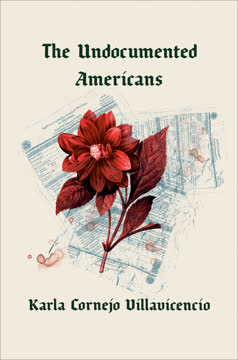Key Takeaways
1. Beyond the Buzzwords: Telling Undocumented Stories
This book is for everybody who wants to step away from the buzzwords in immigration, the talking heads, the kids in graduation caps and gowns, and read about the people underground.
Focusing on the unseen. The author, Karla Cornejo Villavicencio, aims to tell the stories of undocumented immigrants often overlooked in mainstream narratives, moving beyond the focus on "DREAMers" or political talking points. She seeks out day laborers, housekeepers, and construction workers – people whose lives don't generate hashtags but represent the vast majority of the undocumented population. This is not an inspirational book, but a raw, honest portrayal of lives lived in the shadows.
Personal motivation. As an undocumented immigrant herself, the author felt compelled to write this book, especially after the 2016 election. She was angry at the limited portrayals of her community and believed she was uniquely positioned to capture the full, complex truth. Her own experiences with pre-DACA uncertainty and navigating systems fueled her desire to show the humanity beyond the labels.
Shared trauma and art. The book is written from a place of shared trauma and memory, blending reporting with creative nonfiction. The author views the world through the lens of art, attempting to convey the emotional weight of living undocumented in America. This approach prioritizes conveying the tone and feeling of her subjects' experiences, rather than adhering strictly to traditional journalistic objectivity.
2. Day Laborers: Invisible Backbone of the City
We finally felt like we belonged.
Hard labor, little recognition. Day laborers, often seen "idling" on street corners, perform demanding physical work in construction and other sectors, standing for hours in extreme weather with no guarantee of pay. They face wage theft, lack of safety equipment, and racist abuse from employers, operating without workplace protections or collective bargaining power. Despite these hardships, they are essential to the economy.
Community and support. Worker centers like Colectiva Por Fin on Staten Island provide crucial support, offering shelter, resources, and bilingual dispatchers to negotiate jobs and prevent exploitation. These centers formalize the informal labor market and build community among workers who often face isolation. During crises like Hurricane Sandy, day laborers organized volunteer brigades, demonstrating their commitment to their communities despite being marginalized.
Humanity beyond labor. The author seeks to portray day laborers not just as workers or sufferers, but as complex individuals with personal histories, dreams, and fears. Stories like Julián's, who crossed the desert multiple times to see his children and found solace in work after battling loneliness and alcoholism, reveal the deep humanity and resilience beneath the surface of their difficult lives.
3. Ground Zero Cleanup: Unseen Heroes, Lasting Scars
The second responders were undocumented immigrants.
Immediate, unrecognized response. Immediately after 9/11, undocumented immigrants, primarily Latin American and Eastern European, were among the first on the scene at Ground Zero, working dangerous cleanup jobs. They waded through toxic water and dust containing hazardous materials, often with inadequate protective gear, for low wages and sometimes bounced checks. Their vital contributions were largely overlooked in official narratives.
Long-term health consequences. Many cleanup workers developed severe health issues years later, including respiratory illnesses, cancers, and psychological trauma like PTSD, anxiety, and depression. They struggle to access medical care and compensation, facing bureaucratic hurdles and the fear of deportation. Support groups provide a space for shared experience and navigating the complex healthcare and compensation systems.
Systemic invisibility and exploitation. Contractors hired by the city often used bilingual subcontractors to recruit undocumented workers, creating a system of exploitation where workers were treated poorly and denied recognition. The story of the deliveryman's bicycle memorial highlights the forgotten lives lost, as many undocumented victims were not included in official counts due to lack of paperwork or employers' fears of repercussions.
4. Healthcare Barriers: Seeking Healing Outside the System
If they give us papers, psychiatrists will get rich because we’re all crazy.
Lack of access and affordability. Undocumented immigrants face significant barriers to healthcare access in the U.S., unable to purchase insurance even if they can afford it. This forces reliance on emergency rooms for acute issues or community health centers for basic care, but serious conditions often go untreated or are managed with limited resources. The high rates of chronic diseases in communities like Miami-Dade exacerbate this crisis.
Alternative healing methods. In the absence of formal medical care, many immigrants turn to alternative healing practices, including herbal remedies from botanicas or spiritual treatments like vodou. While some educated individuals also use alternative medicine by choice, for undocumented immigrants, it is often a necessity born of desperation. This reliance highlights the systemic failure to provide adequate healthcare access.
Community support and shared resources. Immigrants often rely on informal networks for medical support, sharing prescription medications obtained by insured friends or family members. This demonstrates incredible resilience and mutual aid within the community but also underscores the dangerous reality of self-medication and lack of professional oversight for serious health conditions. The mental health toll of living undocumented is immense, leading to widespread anxiety, depression, and trauma-related issues.
5. Flint's Poisoned Water: A Microcosm of Systemic Harm
What promises can you make to a child about the world of possibility ahead of them when the state has poisoned their bloodstreams and bones such that their behavioral self-control and language comprehension are impaired?
State-sponsored poisoning. The Flint water crisis, where the city's water source was switched, leading to lead contamination, disproportionately affected the city's poor, black, and brown residents. Undocumented immigrants were particularly vulnerable, often the last to learn about the danger due to language barriers and fear of authorities distributing information. The deployment of the National Guard further deterred them from opening doors.
Erosion of trust. The government's failure to address the water issue and initial denial of the problem created deep mistrust among residents, especially immigrants who already feared authorities. Even after bottled water distribution began, many remained skeptical of official assurances about water safety. This lack of trust complicated efforts to provide aid and install filtration systems.
Devastating long-term impacts. Lead exposure, particularly in children, can cause irreversible damage, affecting cognitive development, behavior, and long-term health. The crisis highlights how systemic negligence and disregard for marginalized communities can have devastating, generational consequences. The story of Ivy's daughter, blinded by lead poisoning, exemplifies the profound and tragic human cost.
6. Deportation's Ripple Effect: Shattered Families, Traumatized Children
Stories in the news often end at the deportation, at the airport scene. But each deportation means a shattered family, a marriage ending, a custody battle, children who overnight go from being raised by two parents to one parent with a single income, children who become orphans in foster care.
Beyond the single event. Deportation is not just an individual's removal; it is a catastrophic event that shatters families, leaving American-citizen children behind. The loss of a parent leads to significant drops in household income, increased stress, and profound psychological trauma for children, including higher rates of PTSD. Children are forced to take on adult responsibilities and grapple with complex emotional fallout.
Children's coping mechanisms. Children of deported parents exhibit various coping mechanisms, from stoicism and taking on the role of "man of the house" to dissociation and nightmares. They struggle to understand why their parent was taken and face taunting from peers. The story of Javier's children in Willard, Ohio, illustrates the daily reality of living without a father, navigating fear, and clinging to hope.
The invisible cost. The emotional and psychological toll on children left behind is immense and often unseen. They lose not only a parent but also a sense of security and normalcy. The government's actions create a generation of traumatized citizens, highlighting the far-reaching consequences of immigration enforcement policies on American families.
7. Aging Undocumented: No Safety Net, Burden on Children
The twisted inversion that many children of immigrants know is that, at some point, your parents become your children, and your own personal American dream becomes making sure they age and die with dignity in a country that has never wanted them.
Years of labor, no retirement. Undocumented immigrants spend decades performing physically demanding jobs that age their bodies prematurely. Despite paying taxes, they are ineligible for Social Security or Medicare benefits, lack retirement plans, and often have meager savings. As they become unable to perform manual labor, they face a future with no safety net in a country that benefited from their youth and labor.
Children as caregivers. The burden of caring for aging, uninsured, and often sick undocumented parents falls heavily on their American-citizen or documented children. This creates a unique "American dream" for these children: ensuring their parents can age and die with dignity, often requiring significant financial and emotional support. This responsibility can be immense and lifelong.
Loneliness and isolation. Older undocumented immigrants often experience profound loneliness and isolation, especially if their families are not nearby or if they are estranged. They may struggle with depression and anxiety, lacking the community support or resources available to younger immigrants. Stories like Octavio's highlight the emotional toll of aging alone after a lifetime of sacrifice.
8. Systemic Cruelty: Being Killed Softly, Silently
Being killed softly, silently, and with impunity.
Government negligence and indifference. The book argues that the U.S. government's actions and policies towards undocumented immigrants often create conditions that are deliberately harmful or demonstrate a profound indifference to their well-being. Examples include the poisoned water in Flint, the lack of healthcare access, and the trauma inflicted by deportations and family separations. This is portrayed as a form of slow, systemic violence.
Dehumanization and invisibility. Undocumented immigrants are often reduced to their labor or seen as a burden, their faces "pixelated" and their humanity ignored. This dehumanization makes it easier for the state to implement policies that harm them and for the public to remain indifferent to their suffering. The narrative challenges this by focusing on individual stories and emotional experiences.
Lack of accountability. The systemic harm inflicted often occurs with impunity, as those responsible face few consequences. This reinforces the feeling among immigrants that they are unwanted and disposable. The author's personal experience and the stories of her subjects reveal a pattern of state actions that make life in the U.S. as difficult and dangerous as possible for the undocumented.
9. Not a Journalist: An Immigrant Daughter's Approach
I am not a journalist.
Personal stake and involvement. The author explicitly rejects the traditional journalistic stance of objectivity, arguing that as an undocumented immigrant writing about her own community, it feels unethical to remain detached. She becomes personally involved in the lives of her subjects, offering support, raising money, and advocating for them, blurring the lines between reporter and participant.
Emotional and subjective truth. The book prioritizes conveying the emotional truth and lived experience of undocumented life, even if it means sacrificing strict factual reporting in some instances (e.g., changing names/details for protection). The author's own trauma and perspective shape the narrative, presenting a subjective reality rooted in shared pain and resilience. This approach aims for a deeper, more authentic understanding than traditional reporting might achieve.
Advocacy through storytelling. By sharing these stories and her own experiences, the author seeks to challenge stereotypes, humanize the undocumented community, and expose the systemic injustices they face. Her writing becomes a form of advocacy, using personal connection and emotional resonance to move readers and highlight the urgent need for change.
10. Beyond Labor: Reclaiming Humanity from Pixelated Faces
We were brown bodies made to labor, faces pixelated.
Challenging stereotypes. The book actively works against the common portrayal of undocumented immigrants solely as laborers or victims. While acknowledging the grueling work and suffering, the author delves into the personal lives, dreams, quirks, and complexities of her subjects. She seeks to show them as "weirdos," "randoms," and "characters," not just statistics or political symbols.
Full spectrum of human experience. The stories reveal a wide range of human experiences: love, loss, ambition, humor, faith, mental illness, resilience, and the search for belonging. From Julián's dreams of a bilingual baby to Esme's fight for women's empowerment and Salome's newfound joy in dancing, the book showcases the rich inner lives often hidden by the label "undocumented."
Resilience and dignity. Despite facing immense hardship, exploitation, and systemic cruelty, the individuals in the book demonstrate remarkable resilience and maintain their dignity. They build communities, support each other, and find moments of joy and connection. This focus on their full humanity is a powerful act of resistance against dehumanization.
11. The Children's Burden: Hope and Responsibility
I hope they have a child like me.
Unique pressure on children. Children of undocumented immigrants, particularly American-citizen children, carry a unique burden of responsibility. They often serve as interpreters and navigators for their parents, witnessing their struggles firsthand. As adults, they may feel immense pressure to succeed and provide for their parents' future, becoming their primary safety net.
Ambition fueled by sacrifice. Many children of immigrants are driven by their parents' sacrifices, viewing education and professional success as a way to honor their struggles and ensure a better life for the family. This ambition can be a powerful motivator but also creates significant stress and guilt. The author's own drive is deeply intertwined with her desire to repay her parents.
The anchor child paradox. The concept of the "anchor baby" is reframed from a derogatory term to a symbol of hope and responsibility. These children, by virtue of their citizenship, hold the potential to legalize their parents' status (though this pathway is increasingly restricted) and provide support in old age. This places an extraordinary weight on their young shoulders.
12. Finding Sanctuary: Refuge in Community and Faith
Sanctuary works because ICE has a policy against forcing their way into places of worship.
Churches as safe havens. Churches and other places of worship have historically served as sanctuary spaces for immigrants facing deportation, leveraging a policy that discourages ICE from entering religious institutions. This tradition provides a temporary physical refuge and mobilizes community and faith-based support networks.
Community and spiritual support. Individuals in sanctuary rely heavily on the support of religious leaders, activists, and community members who provide housing, food, legal assistance, and emotional support. Prayer vigils, community gatherings, and personal visits offer crucial connection and hope during periods of intense isolation and uncertainty.
Resilience through collective action. The sanctuary movement demonstrates the power of collective action and faith in resisting unjust policies. By publicly defying deportation orders and seeking refuge, individuals like Leonel and Francisco become symbols of resistance, rallying support and highlighting the human cost of immigration enforcement. This collective effort provides strength and a sense of belonging.
Last updated:
FAQ
What is "The Undocumented Americans" by Karla Cornejo Villavicencio about?
- Personal and Reported Stories: The book blends the author’s own experiences as an undocumented immigrant with deeply reported stories of other undocumented people across the United States.
- Focus on Everyday Lives: Rather than centering on “model immigrants” or DREAMers, Villavicencio highlights the lives of day laborers, housekeepers, construction workers, and others who are often overlooked.
- Creative Nonfiction Approach: The narrative is a mix of memoir, investigative journalism, and creative nonfiction, with names and details changed to protect sources.
- Themes of Trauma and Resilience: The book explores trauma, mental health, family separation, and the resilience of undocumented communities in the face of systemic neglect and hostility.
Why should I read "The Undocumented Americans" by Karla Cornejo Villavicencio?
- Unique Perspective: Villavicencio offers an insider’s view as one of the first undocumented immigrants to graduate from Harvard, providing authenticity and emotional depth.
- Unfiltered and Honest: The book rejects sanitized or inspirational immigrant narratives, instead presenting raw, complex, and sometimes uncomfortable truths.
- Broader Understanding: It challenges stereotypes and expands the conversation about immigration beyond policy debates and media soundbites.
- Literary and Poetic Style: The writing is both lyrical and direct, making it a compelling read for those interested in narrative nonfiction and social justice.
What are the key takeaways from "The Undocumented Americans" by Karla Cornejo Villavicencio?
- Undocumented Lives Are Diverse: There is no single immigrant experience; undocumented people are not just workers or victims, but individuals with unique stories, dreams, and flaws.
- Systemic Neglect and Exploitation: The U.S. government and society often exploit, neglect, or actively harm undocumented communities, as seen in responses to disasters like 9/11, Hurricane Sandy, and the Flint water crisis.
- Mental Health and Trauma: The psychological toll of being undocumented—fear, anxiety, depression, and generational trauma—is a recurring theme.
- Community and Solidarity: Despite adversity, undocumented people build strong support networks and find ways to care for each other and their families.
How does Karla Cornejo Villavicencio approach storytelling and reporting in "The Undocumented Americans"?
- Blending Genres: She combines memoir, journalism, and creative nonfiction, often blurring the lines between them.
- Protecting Sources: Names, places, and details are changed to protect the identities of vulnerable subjects.
- Translation as Art: Villavicencio translates interviews with the nuance of a literary translator, aiming to capture the full humanity and voice of her subjects.
- Rejecting Objectivity: She acknowledges her own biases and emotional involvement, writing from a place of shared trauma and solidarity.
Who are some of the key people and communities featured in "The Undocumented Americans" by Karla Cornejo Villavicencio?
- Day Laborers in Staten Island: The book opens with stories of Latinx day laborers, their struggles, and the support they find in worker centers.
- 9/11 Cleanup Workers: Villavicencio profiles undocumented immigrants who worked at Ground Zero, many of whom now suffer from chronic illnesses.
- Undocumented Women in Miami: She highlights the experiences of women navigating healthcare, alternative medicine, and activism.
- Families in Flint and Cleveland: The book covers undocumented families affected by the Flint water crisis and children coping with parental deportation in Ohio.
What unique challenges do undocumented immigrants face, according to "The Undocumented Americans" by Karla Cornejo Villavicencio?
- Lack of Legal Protections: Undocumented workers are vulnerable to wage theft, abuse, and dangerous working conditions without recourse.
- Barriers to Healthcare: Many cannot access insurance or affordable medical care, leading to reliance on alternative medicine or going without treatment.
- Fear of Authorities: Interactions with police, ICE, or even aid workers can be fraught with fear, leading to isolation and missed opportunities for help.
- Aging and Retirement: Older undocumented immigrants face poverty, lack of social safety nets, and uncertainty about where and how they will age.
How does "The Undocumented Americans" by Karla Cornejo Villavicencio address the concept of the "American Dream"?
- Challenging the Myth: The book questions the validity of the American Dream for undocumented people, showing how it often leads to disillusionment and hardship.
- Intergenerational Sacrifice: Many parents endure grueling labor and separation in hopes of a better future for their children, but the payoff is uncertain.
- Redefining Success: Villavicencio suggests that dignity, community, and survival are more meaningful measures of success than assimilation or material gain.
- Highlighting Contradictions: The narrative exposes how the American Dream is often inaccessible or even harmful to those who are undocumented.
What role does mental health and trauma play in "The Undocumented Americans" by Karla Cornejo Villavicencio?
- Chronic Stress: The constant threat of deportation, discrimination, and instability leads to anxiety, depression, and PTSD among undocumented people.
- Generational Impact: Childhood separation, family trauma, and the pressures of being a “model immigrant” have lasting psychological effects.
- Stigma and Silence: Mental health struggles are often hidden due to cultural stigma and lack of access to care.
- Personal Reflection: Villavicencio openly discusses her own diagnoses and how her experiences as an undocumented person have shaped her mental health.
How does "The Undocumented Americans" by Karla Cornejo Villavicencio critique media and political narratives about immigrants?
- Rejecting Stereotypes: The book pushes back against the “heroic DREAMer” and “criminal alien” tropes, insisting on the complexity of real lives.
- Media Erasure: Villavicencio notes how undocumented people are often invisible in mainstream coverage, except as victims or threats.
- Political Exploitation: She critiques how both parties use immigrants as symbols or bargaining chips, rarely addressing their actual needs.
- Demand for Nuance: The author calls for more honest, nuanced, and respectful storytelling about undocumented communities.
What are some of the most powerful quotes from "The Undocumented Americans" by Karla Cornejo Villavicencio, and what do they mean?
- “This book is for everybody who wants to step away from the buzzwords in immigration, the talking heads, the kids in graduation caps and gowns, and read about the people underground. Not heroes. Randoms. People. Characters.”
- This quote encapsulates the book’s mission to humanize undocumented people beyond political slogans and media clichés.
- “Being deportable means you have to be ready to go at any moment, ready to go with nothing but the clothes on your body.”
- It highlights the constant precarity and lack of security in undocumented life.
- “We’re all fucking sick. It is a public health crisis and it’s hard to know how to talk about it without feeding into the right-wing propaganda machine…”
- Villavicencio addresses the hidden epidemic of mental and physical illness in undocumented communities, and the difficulty of discussing it publicly.
- “If I reach every child of immigrants at an early age, I can make sure every child becomes me. And if they don’t, I can be everyone’s child.”
- This reflects the author’s sense of responsibility and solidarity with other children of immigrants.
What methods and advice does Karla Cornejo Villavicencio offer for writing about undocumented communities in "The Undocumented Americans"?
- Prioritize Safety and Consent: Change names, places, and identifying details to protect sources from legal or personal harm.
- Translate with Care: Approach translation as a literary act, preserving the tone, humor, and personality of interviewees.
- Reject Objectivity: Embrace subjectivity and emotional truth, especially when writing from within a community.
- Honor Complexity: Avoid flattening people into symbols or statistics; instead, portray them as full, complicated human beings.
How does "The Undocumented Americans" by Karla Cornejo Villavicencio redefine what it means to be an “undocumented American”?
- Beyond Legal Status: The book argues that being an “undocumented American” is about lived experience, not just paperwork or lack thereof.
- Claiming Belonging: Many subjects identify as New Yorkers, Michiganders, or simply as part of their communities, regardless of citizenship.
- Dignity in the Margins: The narrative insists on the dignity, agency, and individuality of people who are often relegated to the shadows.
- Collective Memory and Legacy: Villavicencio suggests that reclaiming the stories of the undocumented is a way to honor their lives and resist erasure.
Review Summary
The Undocumented Americans receives mostly positive reviews for its raw, compassionate portrayal of undocumented immigrants' experiences. Readers appreciate Villavicencio's unique voice and the important stories she shares. However, some criticize the book's structure, finding it an uncomfortable mix of memoir and reportage. Many praise the author's writing style and ability to humanize her subjects, while others find her personal interjections distracting. Despite mixed opinions on the execution, most agree the book offers valuable insights into the lives of undocumented Americans and is a necessary read.
Similar Books
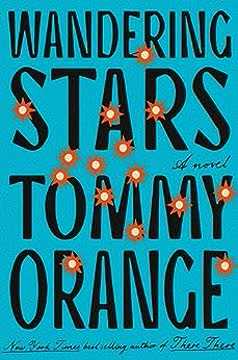
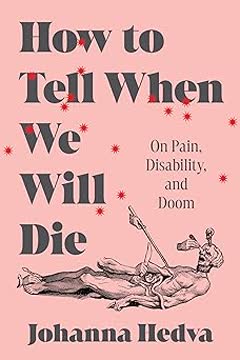
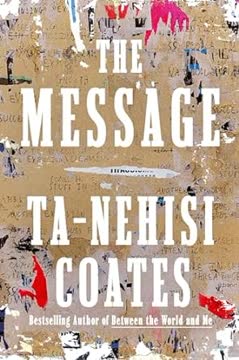
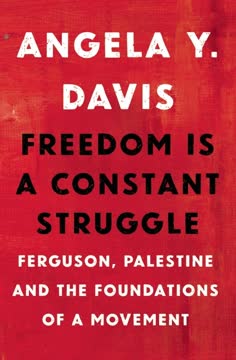
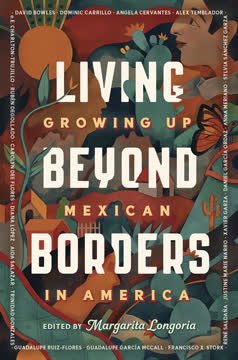


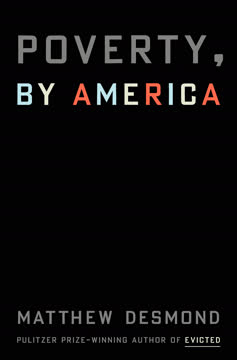
Download PDF
Download EPUB
.epub digital book format is ideal for reading ebooks on phones, tablets, and e-readers.
